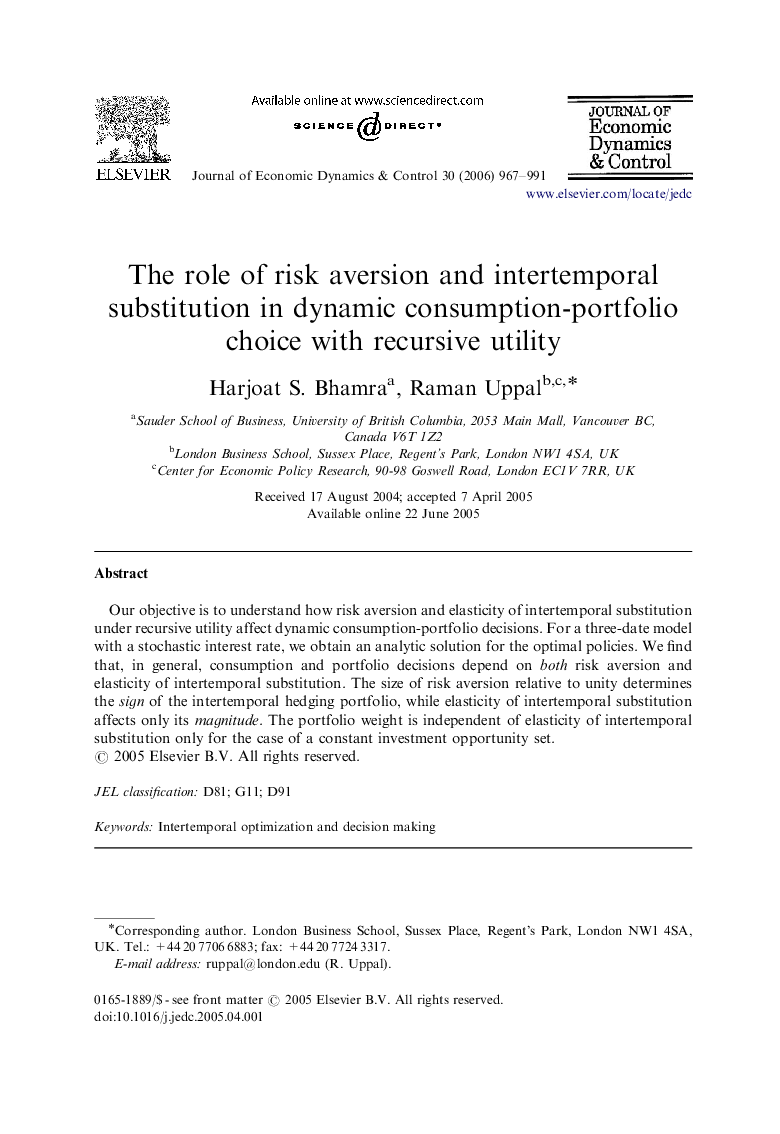| Article ID | Journal | Published Year | Pages | File Type |
|---|---|---|---|---|
| 5099841 | Journal of Economic Dynamics and Control | 2006 | 25 Pages |
Abstract
Our objective is to understand how risk aversion and elasticity of intertemporal substitution under recursive utility affect dynamic consumption-portfolio decisions. For a three-date model with a stochastic interest rate, we obtain an analytic solution for the optimal policies. We find that, in general, consumption and portfolio decisions depend on both risk aversion and elasticity of intertemporal substitution. The size of risk aversion relative to unity determines the sign of the intertemporal hedging portfolio, while elasticity of intertemporal substitution affects only its magnitude. The portfolio weight is independent of elasticity of intertemporal substitution only for the case of a constant investment opportunity set.
Related Topics
Physical Sciences and Engineering
Mathematics
Control and Optimization
Authors
Harjoat S. Bhamra, Raman Uppal,
